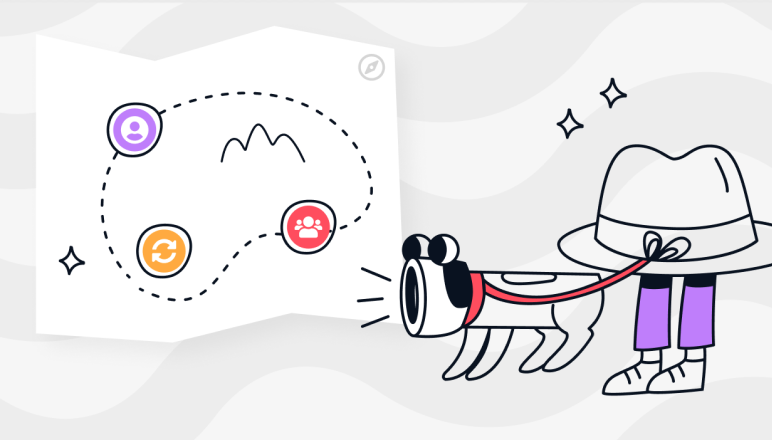Dagster vs Airflow: Everything you Need to Know
Use this guide to understand the differences between Dagster and Airflow

In the world of data orchestration, two names often come to the forefront: Dagster and Airflow. Both are open-source platforms that offer robust solutions for managing, scheduling, and monitoring data pipelines. However, they each have their unique features, strengths, and weaknesses. This comprehensive comparison will delve into the intricacies of both platforms, providing a detailed analysis to help you make an informed decision.
Understanding Dagster
Dagster is a data orchestrator that provides a unified interface for the development, deployment, and monitoring of data pipelines. It is designed to bring structure and reliability to your data workflows, making it easier to build, test, and maintain complex data pipelines.
One of the key features of Dagster is its focus on development productivity. It provides a local development environment that allows you to test your pipelines before deployment. This ensures that any errors or issues are caught early, reducing the risk of deployment failures.
The Architecture of Dagster
Dagster's architecture is centered around the concept of a 'solid', which is a unit of computation that consumes and produces data. These solids are connected to form a directed acyclic graph (DAG), representing the data pipeline. This approach provides a high level of flexibility, allowing you to build pipelines that match your specific needs.
Another notable aspect of Dagster's architecture is its use of a type system. This system helps ensure data integrity by checking the inputs and outputs of each solid. It also provides a clear understanding of the data flowing through your pipelines, making it easier to debug and maintain them.
Strengths and Weaknesses of Dagster
Dagster's strengths lie in its developer-friendly features and flexible architecture. Its local development environment, type system, and modular design make it a powerful tool for building and managing complex data pipelines.
However, Dagster is not without its weaknesses. Its relatively young age means it has a smaller community and fewer resources compared to more established platforms like Airflow. Additionally, while its flexibility is a strength, it can also be a challenge for teams that lack the necessary expertise to fully leverage its features.
Understanding Airflow
Airflow is a platform created by Airbnb to programmatically author, schedule, and monitor workflows. It uses directed acyclic graphs (DAGs) to manage workflow orchestration, and it is designed to handle dependencies and scheduling in a flexible, scalable manner.
Airflow's key strength is its mature, robust platform. It has a large community, extensive documentation, and a wide range of plugins and integrations. This makes it a popular choice for teams looking for a proven, reliable solution for their data pipeline needs.
The Architecture of Airflow
Airflow's architecture is built around the concept of a DAG, which represents a sequence of tasks. Each task is an instance of an operator class, and these tasks can be arranged and scheduled in a variety of ways to create complex workflows.
One of the unique features of Airflow is its scheduler. The scheduler dynamically manages task execution based on your workflows' dependencies. This ensures that tasks are run in the correct order and that resources are efficiently utilized.
Strengths and Weaknesses of Airflow
Airflow's strengths lie in its maturity and flexibility. Its large community, extensive resources, and powerful scheduler make it a reliable choice for managing complex workflows. Additionally, its wide range of plugins and integrations make it highly adaptable to different use cases.
However, Airflow also has its weaknesses. Its learning curve can be steep, especially for teams new to data orchestration. Additionally, while its flexibility is a strength, it can also lead to complexity, making it challenging to manage and maintain workflows.
Dagster vs Airflow: A Comparison
When comparing Dagster and Airflow, it's important to consider your team's specific needs and capabilities. Dagster's developer-friendly features and flexible architecture make it a great choice for teams that value productivity and adaptability. On the other hand, Airflow's maturity and robust platform make it a reliable choice for teams that need a proven, scalable solution.
Ultimately, the decision between Dagster and Airflow will depend on your specific use case. Both platforms offer powerful features for data orchestration, and each has its unique strengths and weaknesses. By understanding these differences, you can make an informed decision that best suits your team's needs.
You might also like
Contactez-nous pour en savoir plus



« J'aime l'interface facile à utiliser et la rapidité avec laquelle vous trouvez les actifs pertinents que vous recherchez dans votre base de données. J'apprécie également beaucoup le score attribué à chaque tableau, qui vous permet de hiérarchiser les résultats de vos requêtes en fonction de la fréquence d'utilisation de certaines données. » - Michal P., Head of Data.




.png)
%202.png)

%202.png)




%202.png)

%202.png)
.png)




%202.png)
%202.png)